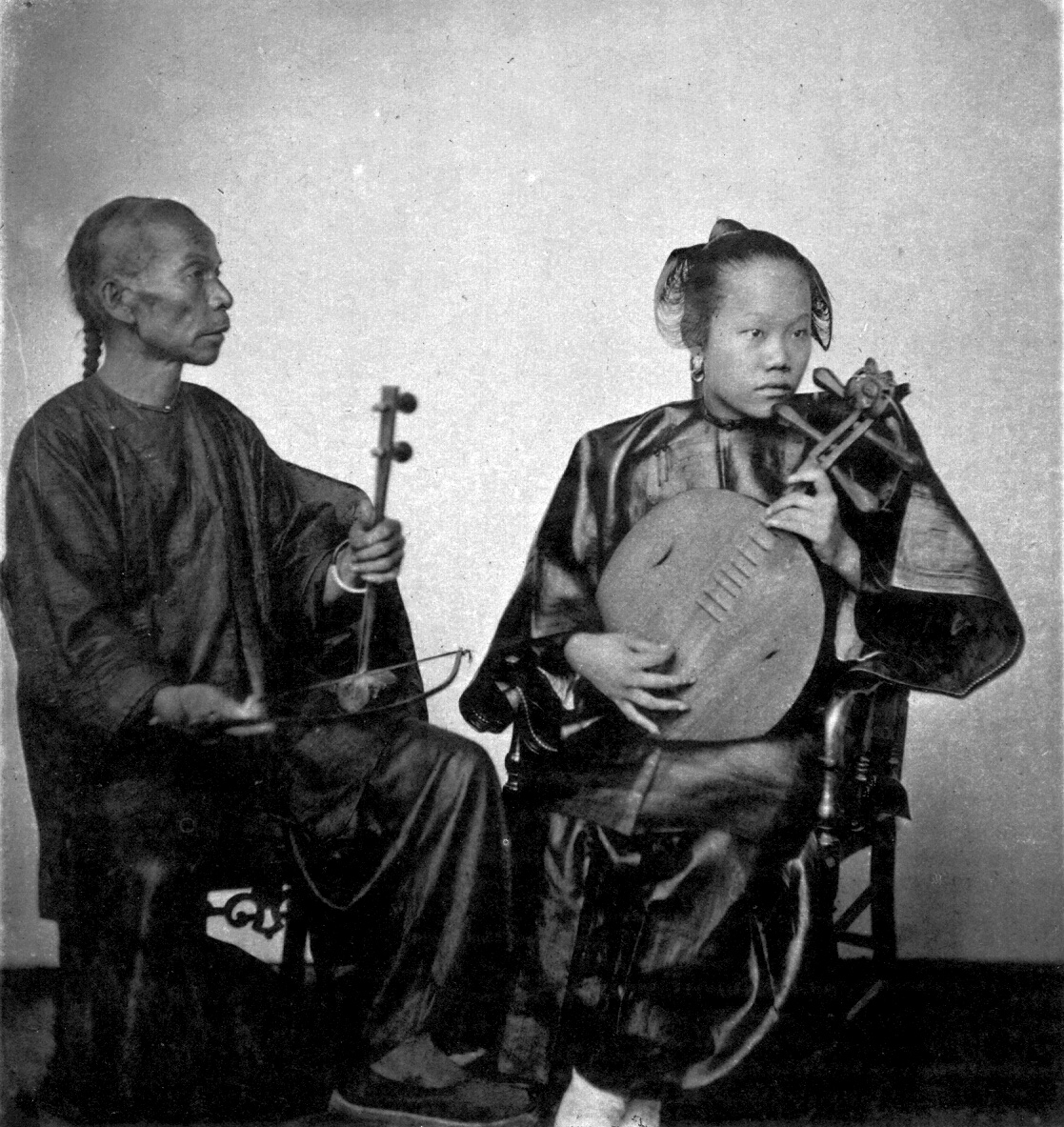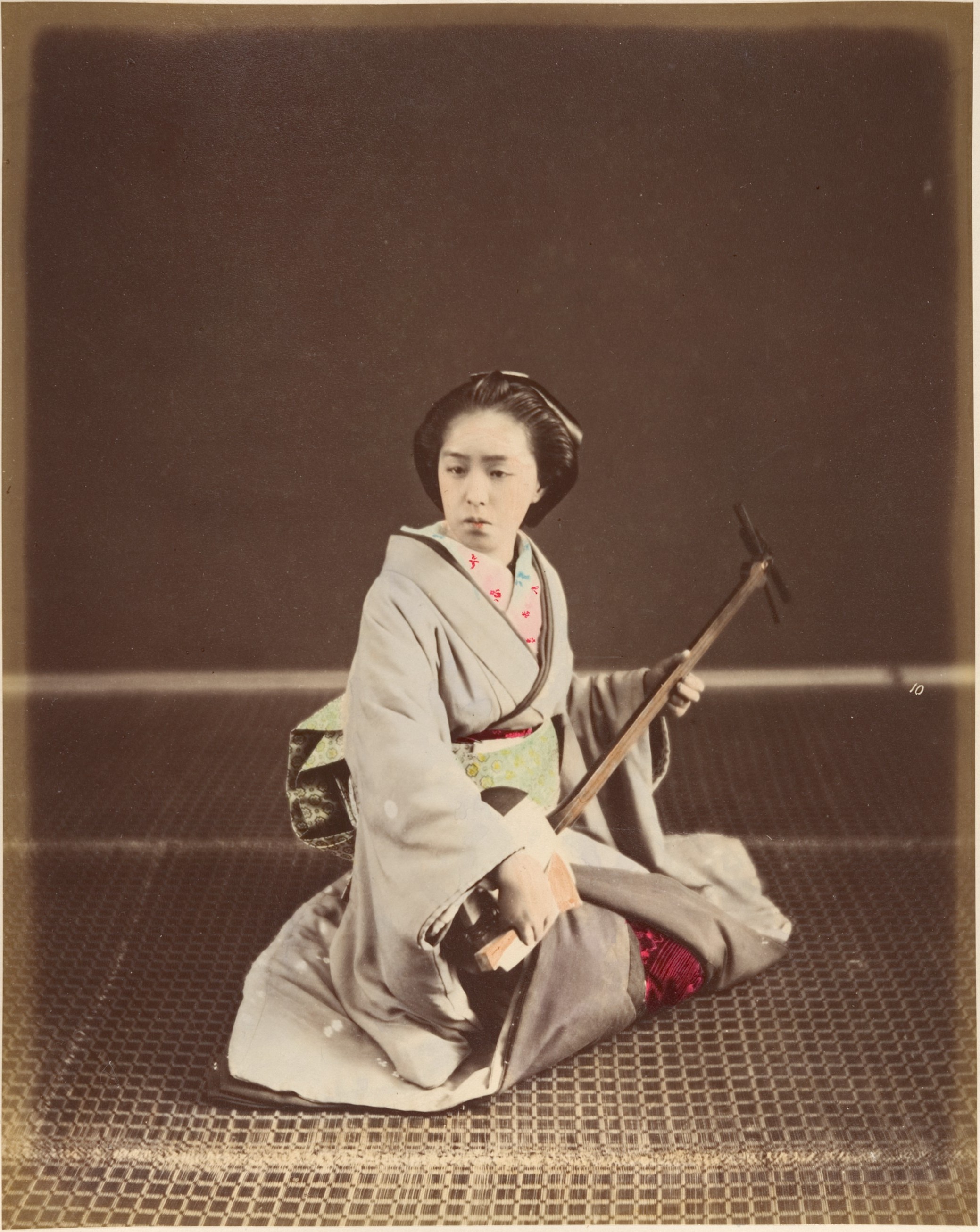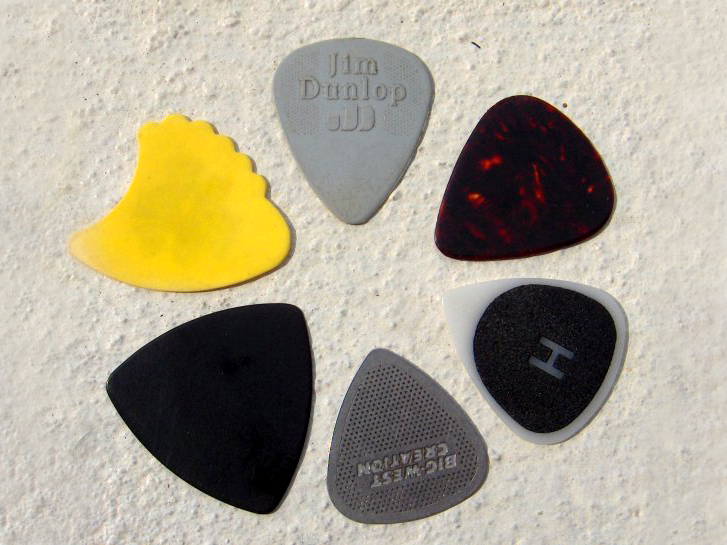|
Moon Lute
The ''yueqin'' (; ja, 月琴, Gekkin; ko, 월금/月琴, Wolgeum; vi, Nguyệt cầm), also called a moon lute or moon guitar, is a traditional Chinese string instrument. It is a lute with a round, hollow soundboard, a short fretted neck, and usually four strings. It is an important instrument in the Peking opera orchestra, often taking the role of main melodic instrument in lieu of the bowed string section. The instrument was invented in China in the 3rd to 5th centuries AD, during the Jin dynasty. The ruan, another Chinese instrument, is the ancestor of the yueqin. The name ''yueqin'' once applied to all instruments with a moon-shaped soundboard, including the ruan; however, "yueqin" now applies to a separate category from the ruan family. Etymology The word ''yueqin'' is made of two characters, ''yuè'' (月 "moon") and ''qín'' (琴 "stringed instrument, zither"). Its name in Korean (''wolgeum'') Japanese (''gekkin'') mean the same thing, and are Sinoxenic wo ... [...More Info...] [...Related Items...] OR: [Wikipedia] [Google] [Baidu] |
Đàn Nguyệt
The đàn nguyệt ( "moon lute") also called nguyệt cầm, đàn kìm, is a two-stringed Vietnamese traditional musical instrument.The Garland handbook of Southeast Asian music - Page 262 Terry E. Miller, Sean Williams - 2008 "This lute is the only stringed instrument used to accompany ca trù singing. The đàn nguyệt or đàn kìm is a moon-shaped, long-necked lute with two silk strings (Figure 13.17). Though literary sources suggest that this instrument has an ..." It is used in both folk and classical music, and remains popular throughout Vietnam (although during the 20th century many Vietnamese musicians increasingly gravitated toward the acoustic and electric guitar). The đàn nguyệt's strings, formerly made of twisted silk, are today generally made of nylon or fishing line. They are kept at a fairly low tension in comparison to the guitar and other European plucked instruments. This, and the instrument's raised frets, allow for the bending tones which are so im ... [...More Info...] [...Related Items...] OR: [Wikipedia] [Google] [Baidu] |
Vietnam
Vietnam or Viet Nam ( vi, Việt Nam, ), officially the Socialist Republic of Vietnam,., group="n" is a country in Southeast Asia, at the eastern edge of mainland Southeast Asia, with an area of and population of 96 million, making it the world's sixteenth-most populous country. Vietnam borders China to the north, and Laos and Cambodia to the west. It shares maritime borders with Thailand through the Gulf of Thailand, and the Philippines, Indonesia, and Malaysia through the South China Sea. Its capital is Hanoi and its largest city is Ho Chi Minh City (commonly known as Saigon). Vietnam was inhabited by the Paleolithic age, with states established in the first millennium BC on the Red River Delta in modern-day northern Vietnam. The Han dynasty annexed Northern and Central Vietnam under Chinese rule from 111 BC, until the first dynasty emerged in 939. Successive monarchical dynasties absorbed Chinese influences through Confucianism and Buddhism, and expanded ... [...More Info...] [...Related Items...] OR: [Wikipedia] [Google] [Baidu] |
Adolfo Farsari
Adolfo Farsari (; 11 February 1841 – 7 February 1898) was an Italian photographer based in Yokohama, Japan. His studio, the last notable foreign-owned studio in Japan, was one of the country's largest and most prolific commercial photographic firms. Largely due to Farsari's exacting technical standards and his entrepreneurial abilities, it had a significant influence on the development of photography in Japan. Following a brief military career, including service in the American Civil War, he became a successful entrepreneur and commercial photographer. His photographic work was highly regarded, particularly his hand-coloured portraits and landscapes, which he sold mostly to foreign residents and visitors to the country. Farsari's images were widely distributed, presented or mentioned in books and periodicals, and sometimes recreated by artists in other media; they shaped foreign perceptions of the people and places of Japan, and to some degree affected how the Japanese saw ... [...More Info...] [...Related Items...] OR: [Wikipedia] [Google] [Baidu] |
Horniman Museum
The Horniman Museum and Gardens is a museum in Forest Hill, London, England. Commissioned in 1898, it opened in 1901 and was designed by Charles Harrison Townsend in the Modern Style. It has displays of anthropology, natural history and musical instruments, and is known for its large collection of taxidermied animals. The building is Grade II* listed. It is a non-departmental public body of the Department for Digital, Culture, Media and Sport and is constituted as a company and registered charity under English law. In 2022 the museum won Museum of the Year, an award made by the Art Fund. History The museum was founded in 1901 by Frederick John Horniman. Frederick had inherited his father's Horniman's Tea business, which by 1891 had become the world's biggest tea trading business. The proceeds from the business allowed Horniman to indulge his lifelong passion for collecting, and which after travelling extensively had some 30,000 items in his various collections, covering nat ... [...More Info...] [...Related Items...] OR: [Wikipedia] [Google] [Baidu] |
Chinese Orchestra
The term Chinese orchestra is most commonly used to refer to the modern Chinese orchestra that is found in China and various overseas Chinese communities. This modern Chinese orchestra first developed out of Jiangnan sizhu ensemble in the 1920s into a form that is based on the structure and principles of a Western symphony orchestra but using Chinese instruments. The orchestra is divided into four sections – wind, plucked strings, bow strings, and percussion, and usually performs modernized traditional music called ''guoyue''. The orchestra may be referred to as ''Minzu Yuetuan'' () or ''Minyuetuan'' () in mainland China, ''Chung Ngok Tuen'' () in Hong Kong, ''Huayuetuan'' () in Southeast Asia, or ''Guoyuetuan'' () in Taiwan, all meaning Chinese orchestra. The term modern Chinese orchestra is sometimes used to distinguish the current form from ancient Chinese orchestras that existed since the Shang dynasty and was used in royal courts and later during Confucian ceremonies. Anc ... [...More Info...] [...Related Items...] OR: [Wikipedia] [Google] [Baidu] |
Shamisen
The , also known as the or (all meaning "three strings"), is a three-stringed traditional Japanese musical instrument derived from the Chinese instrument . It is played with a plectrum called a bachi. The Japanese pronunciation is usually but sometimes when used as a suffix, according to regular sound change (e.g. ). In Western Japanese dialects and several Edo period sources, it is both written and pronounced as . The construction of the varies in shape, depending on the genre in which it is used. The instrument used to accompany kabuki has a thin neck, facilitating the agile and virtuosic requirements of that genre. The one used to accompany puppet plays and folk songs has a longer and thicker neck instead, to match the more robust music of those genres. Construction The is a plucked stringed instrument. Its construction follows a model similar to that of a guitar or a banjo, with a neck and strings stretched across a resonating body. The neck of the is fret ... [...More Info...] [...Related Items...] OR: [Wikipedia] [Google] [Baidu] |
Pipa
The pipa, pípá, or p'i-p'a () is a traditional Chinese musical instrument, belonging to the plucked category of instruments. Sometimes called the "Chinese lute", the instrument has a pear-shaped wooden body with a varying number of frets ranging from 12 to 31. Another Chinese four-string plucked lute is the liuqin, which looks like a smaller version of the pipa. The pear-shaped instrument may have existed in China as early as the Han dynasty, and although historically the term ''pipa'' was once used to refer to a variety of plucked chordophones, its usage since the Song dynasty refers exclusively to the pear-shaped instrument. The pipa is one of the most popular Chinese instruments and has been played for almost two thousand years in China. Several related instruments are derived from the pipa, including the Japanese biwa and Korean bipa in East Asia, and the Vietnamese đàn tỳ bà in Southeast Asia. The Korean instrument is the only one of the three that is no longer wide ... [...More Info...] [...Related Items...] OR: [Wikipedia] [Google] [Baidu] |
Guitar Pick
A guitar pick (American English) is a plectrum used for guitars. Picks are generally made of one uniform material—such as some kind of plastic (nylon, Delrin, celluloid), rubber, felt, tortoiseshell, wood, metal, glass, tagua, or stone. They are often shaped in an acute isosceles triangle with the two equal corners rounded and the third corner less rounded. They are used to strum chords or to sound individual notes on a guitar. In British English, guitar picks are referred to as ''plectrums'', reserving the term ''pick'' to identify the difference between this and finger picks. History Musicians have used plectra to play stringed instruments for thousands of years.Hoover, ''pp. 11-12''. Feather quills were likely the first standardized plectra and became widely used until the late 19th century. At that point, the shift towards what became the superior plectrum material took place; the outer shell casing of an Atlantic hawksbill sea turtle, which would colloquially be r ... [...More Info...] [...Related Items...] OR: [Wikipedia] [Google] [Baidu] |
Octave Displacement
In music, an octave ( la, octavus: eighth) or perfect octave (sometimes called the diapason) is the interval between one musical pitch and another with double its frequency. The octave relationship is a natural phenomenon that has been referred to as the "basic miracle of music," the use of which is "common in most musical systems." The interval between the first and second harmonics of the harmonic series is an octave. In Western music notation, notes separated by an octave (or multiple octaves) have the same name and are of the same pitch class. To emphasize that it is one of the perfect intervals (including unison, perfect fourth, and perfect fifth), the octave is designated P8. Other interval qualities are also possible, though rare. The octave above or below an indicated note is sometimes abbreviated ''8a'' or ''8va'' ( it, all'ottava), ''8va bassa'' ( it, all'ottava bassa, sometimes also ''8vb''), or simply ''8'' for the octave in the direction indicated by placing t ... [...More Info...] [...Related Items...] OR: [Wikipedia] [Google] [Baidu] |
Liuqin
The ''liuqin'' (Chinese: , pinyin: ) is a three, four or five -stringed Chinese mandolin with a pear-shaped body. The range of its voice is much higher than the ''pipa'', and it has its own special place in Chinese music, whether in orchestral music or in solo pieces. This has been the result of a modernization in its usage in recent years, leading to a gradual elevation in status of the ''liuqin'' from an accompaniment instrument in folk Chinese opera, to an instrument well-appreciated for its unique tonal and acoustic qualities. The position of the instrument is lower than the pipa, being held diagonally like the Chinese ruan and yueqin. Like the ruan and unlike the pipa its strings are elevated by a bridge and the soundboard has two prominent soundholes. Finally, the instrument is played with a pick with similar technique to both ruan and yueqin, whereas the pipa is played with the fingers. Therefore, the liuqin is most commonly played and doubled by those with ruan ... [...More Info...] [...Related Items...] OR: [Wikipedia] [Google] [Baidu] |
Taiwan
Taiwan, officially the Republic of China (ROC), is a country in East Asia, at the junction of the East and South China Seas in the northwestern Pacific Ocean, with the People's Republic of China (PRC) to the northwest, Japan to the northeast, and the Philippines to the south. The territories controlled by the ROC consist of 168 islands, with a combined area of . The main island of Taiwan, also known as ''Formosa'', has an area of , with mountain ranges dominating the eastern two-thirds and plains in the western third, where its highly urbanised population is concentrated. The capital, Taipei, forms along with New Taipei City and Keelung the largest metropolitan area of Taiwan. Other major cities include Taoyuan, Taichung, Tainan, and Kaohsiung. With around 23.9 million inhabitants, Taiwan is among the most densely populated countries in the world. Taiwan has been settled for at least 25,000 years. Ancestors of Taiwanese indigenous peoples settled the isla ... [...More Info...] [...Related Items...] OR: [Wikipedia] [Google] [Baidu] |
Beijing Opera
Peking opera, or Beijing opera (), is the most dominant form of Chinese opera, which combines music, vocal performance, mime, dance and acrobatics. It arose in Beijing in the mid-Qing dynasty (1644–1912) and became fully developed and recognized by the mid-19th century. The form was extremely popular in the Qing court and has come to be regarded as one of the cultural treasures of China. Major performance troupes are based in Beijing, Tianjin and Shanghai. The art form is also preserved in Taiwan, where it is also known as (). It has also spread to other regions such as the United States and Japan. Peking opera features four main role types, '' sheng'' (gentlemen), ''dan'' (women), '' jing'' (rough men), and '' chou'' (clowns). Performing troupes often have several of each variety, as well as numerous secondary and tertiary performers. With their elaborate and colorful costumes, performers are the only focal points on Peking opera's characteristically sparse stage. They use the ... [...More Info...] [...Related Items...] OR: [Wikipedia] [Google] [Baidu] |








.jpg)